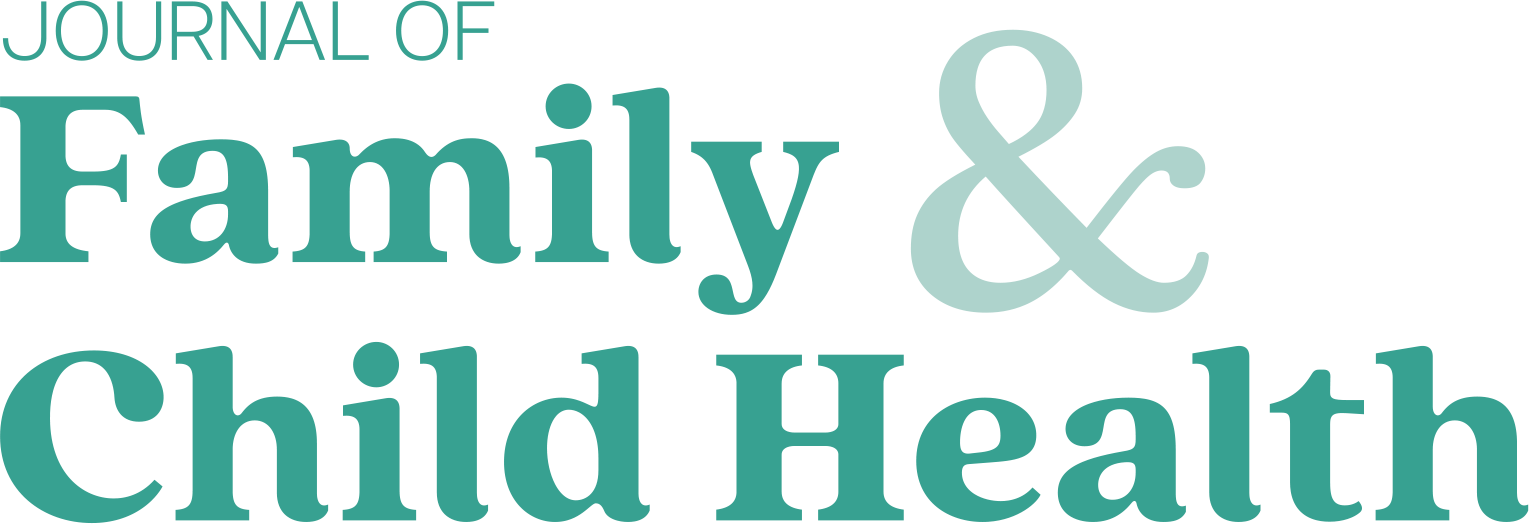The T factor: Cognitive and emotional development in first 3 years of life
This US study explored key environmental resources and their effect on the healthy cognitive, socio-emotional and neurological development of a child in their first 3 years of life.
The study was longitudinal in design and assessed a sample of 232 mother–infant dyads. The aim was to define basic psychosocial resources during this key period of development, which may help to inform policy. These resources were identified each as ‘thrive factor’ (T factor). The study took place at an academic medical centre from 2017 to 2022. The sample was oversampled for factors such as poverty. The children assessed had not been exposed to any birth complications, congenital abnormalities or exposure in utero to substances.
The T factor the team identified was composed of environmental stimulation, nutrition, neighbourhood safety, positive caregiving and child sleep. The outcomes through to age 3 were assessed by measuring grey and white matter brain volumes and cortical folding at age 2 and 3. Cognitive and language development was assessed at 3 years using the BayleyIII assessment. The researchers also assessed internalising and externalising symptoms at age 2, using the Infant–Toddler Social and Emotional Assessment.
The researchers found that the T factor was positively associated with child cognitive abilities and child language, while it was negatively associated with child externalising and internalising symptoms. Where T factor scores were higher, there was a decrease in internalising symptoms for children in their first year.
The overall findings indicate that the T factor, which involves key aspects of the psychosocial environment, has a significant impact on the social, emotional and cognitive outcomes of a child during their first 3 years of life. The findings indicate that the first year holds particular influence on outcomes.
This is a key time in a child's mental development. What may influence a more positive trajectory for every child is if they were able to have access to the necessary environmental resources and enhancements in their first year of life, the researchers suggest.
Preterm birth and risk of adverse neurodevelopmental outcomes
A study has examined the long-term neurodevelopmental outcomes of children born at varying gestational ages. The study looked at children born at 32 to 33 weeks, defined as moderately preterm by the authors, while 34–36 weeks was classified as late preterm and 39–40 weeks was described as full term. There was more focus on moderately preterm developmental outcomes.


The study assessed 1281690 liveborn singleton children who had no congenital malformations at birth and who had been born between 1998 and 2012. The authors assessed the motor, cognitive epileptic, hearing and visual outcomes for each child, as well as examining for any neurological impairments diagnosed before 16 years of age. The researchers also assessed for the absolute risk of neurodevelopmental impairment by employing the use of risk differences in their calculations.
The children were followed up for an average of 13 years, revealing that 75311 of the infants who had no congenital malformation were diagnosed with at least one neurodevelopmental impairment. Of these, 5899 were found to have motor impairment, 27371 had cognitive impairment, and 11870 were found to have epileptic impairment.
The team also found that 19700 were visually impaired to some extent and 20393 had a hearing problem. The highest risk of such developmental outcomes of any kind was seen in children who were born moderately or late preterm, in comparison to full term babies.
For all impairments, the highest risk was at 32 weeks, with risk gradually reducing until 41 weeks, at which point babies were found to have the least risk of developing neurodevelopmental impairment.
The authors concluded that children born moderately or late preterm have a higher risk of adverse neurodevelopmental outcomes. The researchers hope their work may inform both health professionals and families to seek a thorough risk assessment and follow-up.
Consequences of the Covid-19 pandemic on child and adolescent mental, psychosocial and physical health
The aim of this study from Canada was to identify and map available evidence around the unintended effects of the Covid-19 pandemic and resultant restrictions on children's and adolescents' mental, psychosocial, and physical health.
Between May 2021 and April 2022, the researchers identified peer-reviewed literature reporting the unintended effects of the Covid-19 pandemic on children's and adolescents' mental, psychosocial, and physical health.
The most commonly reported topic related to children's and adolescents' mental health was the impact of Covid-19 lockdown orders. Although the authors did not collect data on the results of the outcomes included in the articles, others have reported that lockdowns have had a significant impact on children's and adolescents' mental health. Specifically, mental health challenges such as anxiety, depression and stress were reported most frequently.
Most articles reporting on physical health outcomes (84%) examined abuse or violent discipline that children and adolescents faced, particularly in response to increased stress resulting from lockdown measures. Accidental poisonings of children during Covid-19 were reported in eight (9%) articles and often resulted from pharmaceutical drugs/medicine and hand sanitizer. Six articles (7%) reported on foreign object removal in children, which included four retrospective cohort studies and two case studies, all involving children from birth to 5 years.
The researchers say they recognise several limitations: they included only English language articles primarily due to funding and resource implications. Second, they did not include specific disease or clinical categories in the search as part of physical consequences (e.g., delayed diagnosis of diabetic ketoacidosis and appendicitis) of the Covid-19 pandemic.
The researchers conclude that awareness of the social, psychological, emotional and mental burden the pandemic has inadvertently placed on children, adolescents and their families is paramount to addressing their healthcare needs. Additional efforts are needed to track longer-term mental, psychosocial and physical consequences of the public health measures implemented in response to the pandemic, especially in children and adolescents.
Investigation of dental and oral health in children and adolescents with special support needs
This German study aimed to investigate the opinions and approaches of child and adolescent psychiatrists and their patients regarding oral and dental health. The questionnaire-based cross-sectional study was conducted in collaboration with the Professional Association for Child and Adolescent Psychiatry, Psychosomatics and Psychotherapy in Germany (BKJPP).
The BKJPP was addressed through collaborative efforts of the working group, consisting of experts in the field of child and adolescent psychiatry and experts in the field of special care dentistry, who were contacted and invited to collaborate.
Approximately one-fifth of participants reported treating one or more children and adolescents with disabilities daily (21.1%). In contrast, about one-third of participants (32.7%) stated they treated children and adolescents with disabilities about once a month or less frequently.
Dental and oral health topics were discussed with one-fifth of the patients (19.2%), while 11.5% reported that they were ‘never’ a part of their therapy. Patient-related concerns about dental and oral health were primarily brought into the context of child and adolescent psychiatric work.
Dental treatment anxieties were prominent. Only 3.8% of the participants regularly assigned diagnoses related to dental status. Child and adolescent psychiatrists employ a bio-psychosocial model for the genesis of oral health-related conditions in children and adolescents with special needs.
It is concluded that child and adolescent psychiatrists have a foundation in relationship-based work for assessing oral and dental healthcare and providing recommendations for further dental care. Regional networking and science must be further developed.

Is child anaemia associated with early childhood development?
This US study examined associations between severe or moderate anaemia and early childhood development domains (literacy–numeracy, physical, social–emotional, and learning) and an overall early childhood development index among children age 36–59 months.
Data from nine surveys were included based on the availability of the early childhood development questions, anaemia testing for children and recent implementation during the seventh phase of the Demographic and Health Surveys (DHS) programme (circa 2013–2019).
DHS surveys are population-based household surveys that are representative at national and subnational levels. Eligible women aged 15–49 years are asked questions about maternal and child health and nutrition, and early childhood development, among other topics.
More than 40% of children age 36–59 months had any anaemia in 7 out of 9 countries and the prevalence of any anaemia ranged from 26% in Rwanda to 62% in Benin. The percentage of children with mild anaemia ranged from 17% in Rwanda to 31% in Haiti and Cambodia. The prevalence of moderate anaemia ranged from 8% in Jordan to 32% in Benin, and the prevalence of severe anaemia ranged from less than 1% in Cambodia, Jordan, and Rwanda to 3% in Burundi and Senegal.
In most of the countries, anaemia was a serious public health problem, and more than half of children were developmentally on track, but there was variation across countries. There were only two statistically significant findings with social-emotional and physical development in Benin and Maldives, respectively. Both associations were small.
The study found few associations between severe or moderate anaemia and early childhood development domains and the overall index among children age 36–59 months. Positive associations were observed for early learning/interaction variables and a few demographic variables. Multi-sectoral interventions that target children early and address disparities are important to promote early childhood development in lowand middle-income countries.
Future research could replicate these analyses with the new early childhood development index 2030 or direct developmental assessments which address some of the limitations of the index, and longitudinal studies with younger children could also address temporality issues.
Additionally, studies focusing on the complex pathways between nutrition indicators and all domains of nurturing care, and early childhood development outcomes in different contexts could inform targeted early childhood development policies and programmes.

